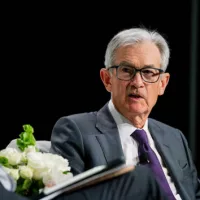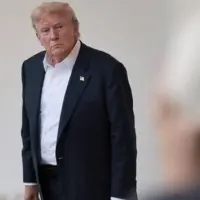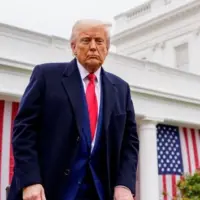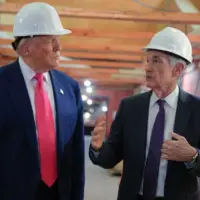
(WASHINGTON) — The Federal Reserve on Wednesday is set to announce its first decision on the level of interest rates since President Donald Trump last month intensified calls for lower borrowing costs and voiced eagerness about the potential “termination” of Fed Chair Jerome Powell.
In recent days, Trump has dialed back his attacks on Powell, saying he will not fire Powell before the end of the top central banker’s term next year. Trump has reiterated his displeasure with the level of interest rates, however, urging the central bank to lower them.
Despite pressure from the White House, Powell is widely expected to hold interest rates steady, according to the CME FedWatch Tool, a measure of market sentiment. The central bank’s benchmark interest rate currently stands at an elevated level of between 4.25% and 4.5%.
The rate decision arrives days after fresh data showed robust job growth in April, defying some fears of a hiring slowdown in the aftermath of Trump’s “Liberation Day” tariff announcement early last month.
Despite flagging consumer sentiment and market turmoil, the labor market has provided a bright spot since Trump took office. Meanwhile, inflation cooled in March, the most recent month for which data is available.
Last month, Powell raised the possibility that Trump’s tariffs may cause what economists call “stagflation,” which is when inflation rises and the economy slows.
If the Fed raises interest rates as a means of protecting against tariff-induced inflation under such a scenario, it risks stifling borrowing and slowing the economy further. On the other hand, if the Fed lowers rates to stimulate the economy in the face of a potential slowdown, it threatens to boost spending and worsen inflation.
Still, Powell pointed to solid economic performance as reason to take a patient approach as policymakers await the impact of tariffs.
“For the time being, we are well positioned to wait for greater clarity,” Powell told an audience at the Economic Club of Chicago. “Life moves pretty fast.”
Recession fears are mounting on Wall Street as Trump’s tariffs threaten to upend global trade. Goldman Sachs earlier this month hiked its odds of a recession from 35% to 45%. JPMorgan pegged the probability of a recession this year at 60%.
A government report last week showed the U.S. economy shrank over the first three months of 2025, much of which took place as Trump’s flurry of tariff proposals stoked uncertainty among businesses and consumers.
U.S. gross domestic product, or GDP, declined at a 0.3% annualized rate over three months ending in March, according to government data released on Wednesday. The figure marked a sharp dropoff from 2.4% annualized growth over the final three months of 2024.
The rate decision on Wednesday also marks the first adjustment of borrowing costs since Trump’s closely watched “Liberation Day” tariff announcement on April 2, which triggered the biggest single-day stock market drop since the COVID-19 pandemic.
Days later, Trump suspended a major swathe of the tariffs, sending the market to one of its largest ever single-day increases. A simultaneous escalation of tariffs on Chinese goods kept the effective tariff rate at its highest level in more than a century, the Yale Budget Lab found.
The White House is seeking to strike trade agreements with dozens of U.S. trade partners before the 90-day suspension of so-called “reciprocal tariffs” expires in July.
“As we gain a better understanding of the policy changes, we will have a better sense of the implications for the economy,” Powell said last month.
Copyright © 2025, ABC Audio. All rights reserved.















